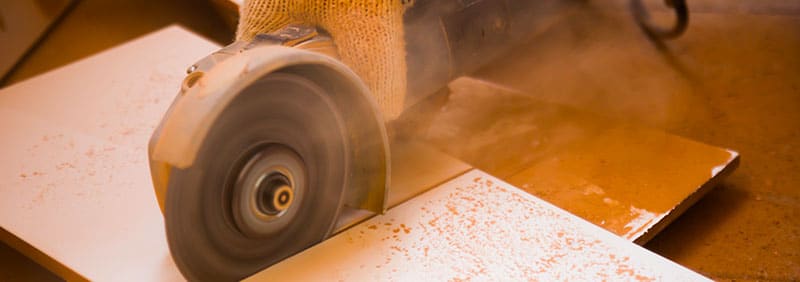Products compared
Hours of research
Member comments
Field tests done
Are you not sure whether you should buy a Reciprocating saw or an angle grinder? It can be a hard choice since both tools can handle very similar tasks.
On top of that, these tools aren’t cheap. They actually can be pretty expensive so picking one of them is often the only way.
Let us help you make an informed decision about whether an angle grinder or a reciprocating saw is the best cutting tool for you!
Reciprocating saw
There are a lot of instances where a reciprocating saw works better than an angle grinder. Cutting wood for example is much easier with a Reciprocating saw than with an angle grinder. This is because the reciprocating saw uses a push and pull movement which is optimal for cutting wood.
A reciprocating saw equipped with a metal saw blade can be used to cut through most types of metal. Bolts, nuts, and sheet metal should be no challenge for a reciprocating saw. However, if you are looking for a power tool specifically made to grind metal, an angle grinder would probably be a better option for you.
In the battle between reciprocating saw vs angle grinder, the saw wins when it comes to narrow spaces. Because of the push-pull movement of the saw, it can be used in tiny spaces where an angle grinder would not be able to get to.
Reciprocating saw pros and cons
- Longer saw
- More precise and safe
- Often more battery life
- Best for wood
- Less diverse tool
Who should buy a reciprocating saw?
Reciprocating saws are best for people who work in tight, narrow spaces. For example, a lot of garages prefer a reciprocating saw over an angle grinder since cars have a lot of small compartments. These areas are easier to reach with a reciprocating saw.
More examples of who should buy a reciprocating saw:
- Woodworkers and furniture makers
- Professionals who work in small places and need to perform more precise cuts
- Garage workers who need a saw for narrow spaces
Angle grinder
An angle grinder is a super diverse tool that works for a lot of different job applications. It can be used for cutting nuts and bolts as well as sanding different materials like wood and metal.
A big advantage of an angle grinder over a reciprocating saw is the speed at which it operates. Compared to the push-pull motion of a saw the rotation of an angle grinder is much faster and therefore more powerful.
Cutting metal, steel and concrete is no challenge for the right angle grinder. If you are looking for a tool that will be able to handle heavy jobs the angle grinder is probably your best choice.
Because of its power and small operating area, the angle grinder is less useful while cutting through thick materials. When you are looking for a tool that can do this we would say a reciprocating saw is probably a better option for you.
Angle grinder pros and cons
- Can be used for different jobs
- More powerful
- Can be cheaper
- Best for metal
- Not very good for wood
Who should buy an angle grinder?
Angle grinders are for everyone and every handyman should have one at home. Whether you work a lot with metal or wood this tool will always come in handy.
Angle grinders are best used for people who need a lot of power. If you are mainly cutting metal or concrete an angle grinder is probably best for you. Woodworkers should probably go for a reciprocating saw instead.
Conclusion
When in doubt about what to get we prefer an angle grinder. Unless you are doing very specific jobs like cutting thick wood, this tool will suit you well!

Related: best cordless angle grinders
We compared all the cordless angle grinders on the market! Let us help you make an informed buying decision.



